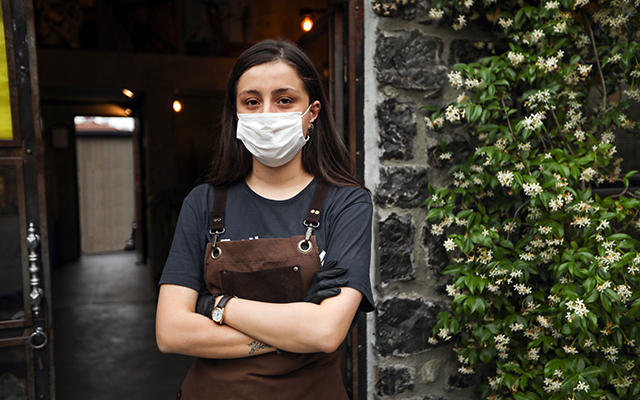Articles
February 01, 2022
After months of pressure, Congress inches closer to replenishing RRF
New bill would add $48B to underfunded program.

Nearly a year after the Restaurant Revitalization Fund (RRF) was created by Congress, restaurants continue to struggle to survive, especially the 177K eligible restaurants that applied for RRF grants in the spring of 2021 but never received them. Since the woefully underfunded program ran out of money last June, the Association—armed with devastating economic analysis from several research reports—has been engaging members of Congress in a months-long campaign to replenish the RRF through stand-alone legislation, government funding bills, or whatever way possible.
Recently, Sens. Ben Cardin (D-MD) and Roger Wicker (R-MS) introduced S. 2675—the Continuing Emergency Support for Restaurants Act, which would add $48B to the RRF.
“Restaurants nationwide remain buried under more than 18 months of debt and they are struggling to rehire staff and purchase supplies,” Cardin said in a statement last August. In a January 2022 interview with The Hill, he expressed optimism about the possibility of replenishing the RRF. “We are continuing to get broader support,” he said, adding that he’s confident that “lawmakers are pretty close to securing necessary funding for the push.”
“Replenishing this fund would help restaurants, their staff, and the broader food supply chain as they continue to get back on their feet,” said Wicker who noted last summer that only 27% of RRF applicants in Mississippi received an award.
“After two years of closures, COVID-19 variants, worker shortages, and inflationary pressure, a dangerous number of restaurants are at the end of the line,” said Association EVP, Public Affairs Sean Kennedy. “The RRF was a critical lifeline to many, and we know that it worked as intended for restaurants that received grants.”
According to the Association’s 10th COVID-19 Operator Survey:
Take action now! Join the Association's grassroots effort to replenish the RRF and support restaurants in your neighborhood and across the country.
Recently, Sens. Ben Cardin (D-MD) and Roger Wicker (R-MS) introduced S. 2675—the Continuing Emergency Support for Restaurants Act, which would add $48B to the RRF.
“Restaurants nationwide remain buried under more than 18 months of debt and they are struggling to rehire staff and purchase supplies,” Cardin said in a statement last August. In a January 2022 interview with The Hill, he expressed optimism about the possibility of replenishing the RRF. “We are continuing to get broader support,” he said, adding that he’s confident that “lawmakers are pretty close to securing necessary funding for the push.”
“Replenishing this fund would help restaurants, their staff, and the broader food supply chain as they continue to get back on their feet,” said Wicker who noted last summer that only 27% of RRF applicants in Mississippi received an award.
“After two years of closures, COVID-19 variants, worker shortages, and inflationary pressure, a dangerous number of restaurants are at the end of the line,” said Association EVP, Public Affairs Sean Kennedy. “The RRF was a critical lifeline to many, and we know that it worked as intended for restaurants that received grants.”
According to the Association’s 10th COVID-19 Operator Survey:
- 96% of RRF recipients said the grant made it more likely that they would be able to stay in business during the pandemic.
- 85% of RRF recipients said the grant helped them retain or hire back employees that would otherwise have been temporarily or permanently laid off.
- 94% of restaurant operators that applied for an RRF grant but did not receive funding said a future grant would enable them to retain or hire back employees that would otherwise have been temporarily or permanently laid off.
- 46% of restaurant operators that applied for an RRF grant but did not receive funding said it is unlikely that they will be able to stay in business beyond the pandemic, if they do not receive a grant through the Restaurant Revitalization Fund.
Take action now! Join the Association's grassroots effort to replenish the RRF and support restaurants in your neighborhood and across the country.